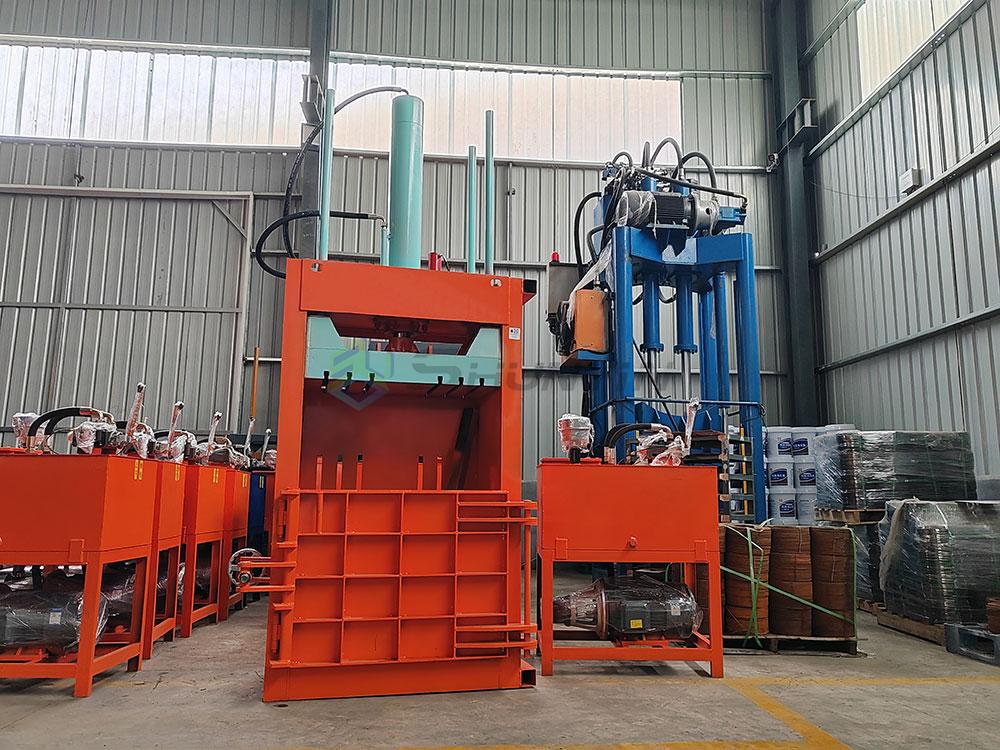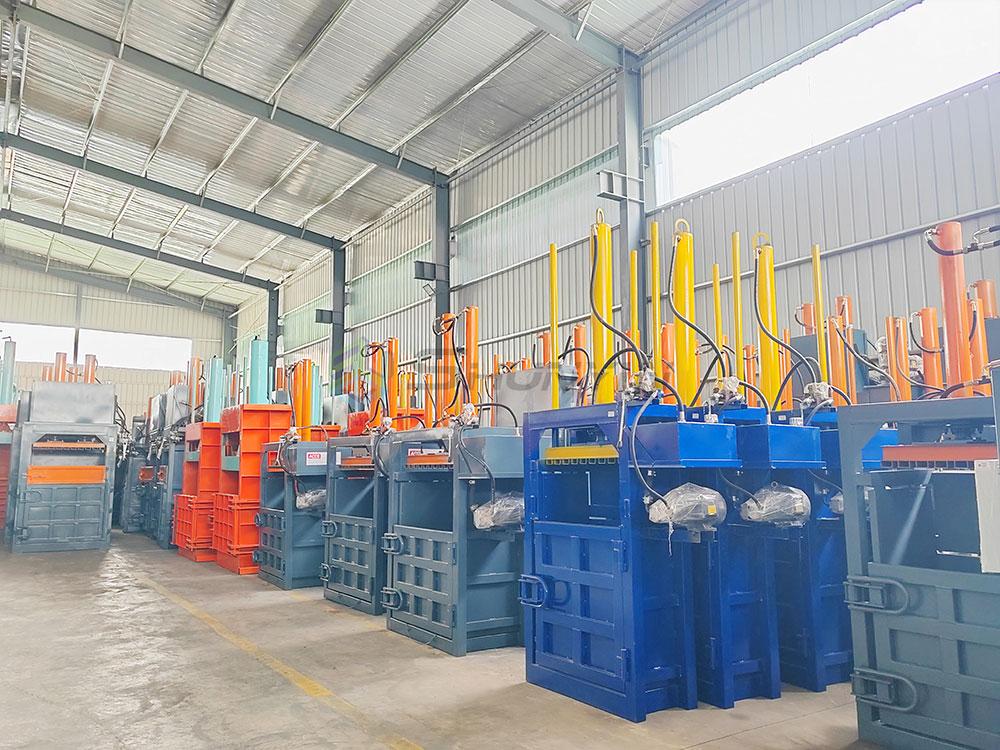Compression density increased by 3 times ▏Occupies only 2㎡ and processes 5 tons of old clothes per day ▏European CE/American UL certification ▏Customization supported
“The logistics cost of each ton of used clothing is more expensive than the fabric itself!” – This is the helpless complaint of a clothing factory owner.
According to statistics, the transportation cost of uncompressed used clothing accounts for as much as 65% of the total processing cost, not to mention the skyrocketing warehouse rent and low manual sorting efficiency caused by scattered stacking.
And a professional Clothes Baler (clothing baler) can not only compress the volume to 1/4, but also turn your old clothes from “negative assets” into a quantifiable source of renewable resource profits.
1. Four major cost pain points solved by Clothes Baler
Logistics costs are out of control
Current situation: Loose clothing fills the truck space, and the single transportation volume is only 25% of the compressed one.
Solution: The XL-3000 model increases the density to 800kg/m³, and the single truck capacity increases by 4 times.
Data support: After using it, an exporter’s annual logistics costs dropped from $280,000 to $67,000.
Storage capacity pressure increased dramatically
Current situation: A 1,000㎡ warehouse can only store 200 tons of bulk used clothes, which is prone to fire hazards.
Solution: The compressed standard square bags can be stacked to 8 meters high, and the storage capacity of the same area is tripled.
Scene comparison chart: Loose clothing piles vs neat square bag three-dimensional shelves.
Low labor efficiency
Current situation: It takes 2 hours for 3 workers to manually pack 1 ton of clothing, and the labor cost accounts for 30%.
Solution: Fully automatic hydraulic system + one-button operation, one person can complete the same amount of compression in 20 minutes.
Video clip: Workers fast-forward from laborious carrying to easy button pressing.
Recyclers are severely suppressing prices
Current situation: Uncompressed blended clothing is regarded as “low-quality waste” and the recycling price is only $0.1/kg.
Solution: High-density standard square bags can be classified and auctioned, and the unit price is increased to $0.35/kg.
Case: A recycling company in Guangdong increased its monthly profit by $12,000.
2. Why did customers choose our Clothes Baler?
1. Technical performance that exceeds industry standards
500-ton high-pressure system: suitable for hard fabrics such as denim and down jackets (the industry average is only 300 tons).
Intelligent humidity detection: automatically adjusts the pressure to prevent mildew (patent number: ZL2023XXXXXX).
Modular design: supports on-demand upgrades of sorting tables, metal detectors and other accessories.
2. Worry-free full-service
48-hour response: 10 repair centers are set up in the United States/Europe/Southeast Asia.
Cost recovery calculator: enter the type of old clothes + average daily output, and generate the investment return cycle with one click.
Policy bonus docking: assist in applying for EU textile recycling enterprise subsidies (up to 20% of the equipment price).
3. Customer Testimonials: Calculate this economic account
“Clothes Baler doubled our old clothes export profits!”
– Ahmed, Purchasing Director of a Middle Eastern recycling company
Data comparison:
Before compression: 300 tons per month, logistics cost $45,000, storage rent $8,000
After compression: 1,200 tons per month, logistics cost $33,000, storage rent $3,500
Conclusion: The equipment cost is recovered in 8 months, and the annual net profit increases by $620,000.
4. Limited-time benefits: Seize the wealth of old clothes
✅ Order before December 31: Enjoy 3 years of free maintenance + 6 years of quality assurance
✅ Free trial: Provide 10 tons of old clothes compression experience package (only need to pay round-trip shipping)
5. Answers to common questions
Q: Is the machine maintenance complicated?
A: The IoT early warning system automatically pushes maintenance reminders, and the annual maintenance cost is less than $500.
Q: How to ensure operational safety?
A: Dual infrared emergency stop + German TÜV safety certification, 20 years of zero accident record.










